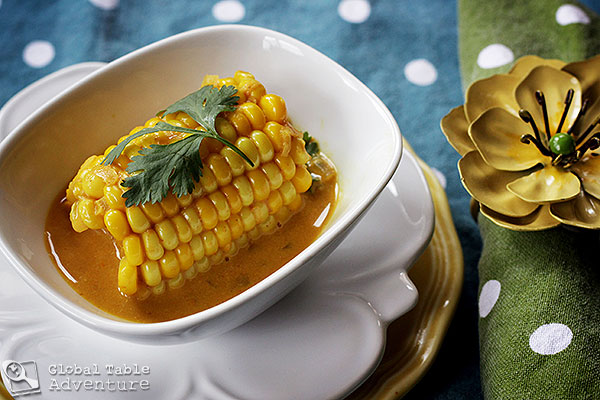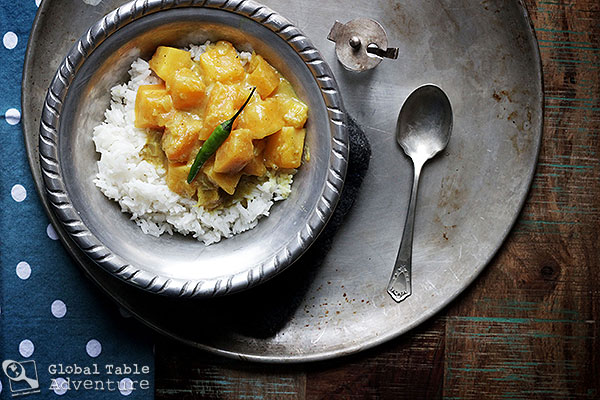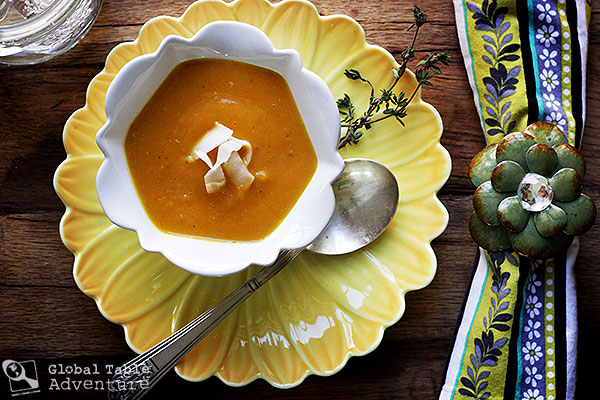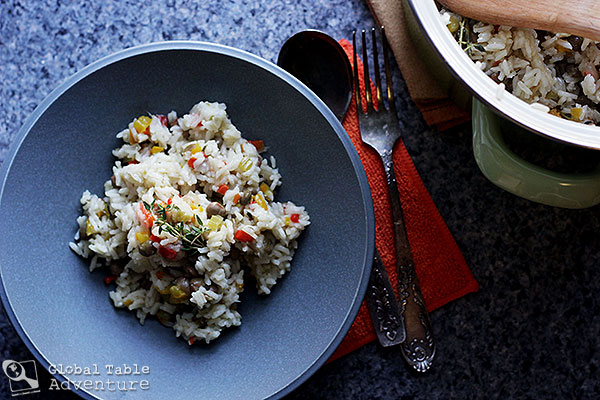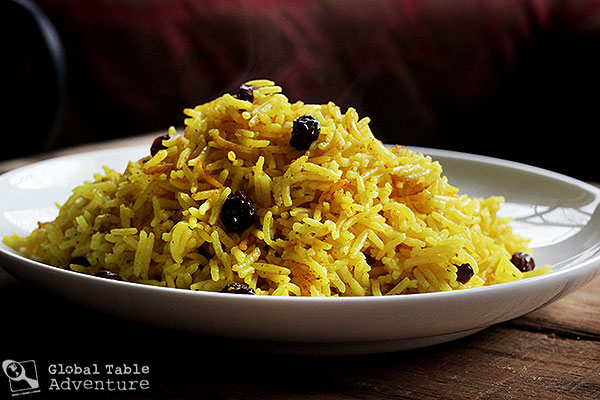
During the week, I’m always looking for a way to get beyond ordinary b-b-boring boiled rice. Hello. Cue our friends of South Africa… they have the answer with “Geelrys,” which literally translates to “yellow rice.” Imagine a pot of turmeric and raisin bejeweled rice… a simple side dish as flavorful as it is gorgeous. Geelrys tastes like a sunrise on the most beautiful morning of your life. Or, like happy a hug from a good friend. Or, maybe it just tastes like really, really good rice. While you can make Geelrys with any kind of rice you like, I prefer it with Basmati, as does my South African friend, Janine. The cooking time for Basmati is longer than standard white rice, but much gentler; the end result is tantalizingly delicate. There’s really nothing to it… Yellow Rice is definitely weeknight friendly. P.S. This is a great dish for picky eaters – one to help to broaden their horizons without going too crazy with spices. Serves 6 Ingredients: 2 cups basmati rice, rinsed & drained …
Read More
When I was a little girl, I’d sit on the back porch and shuck long ears of corn, the silk wrapping around my fingers, clinging to my dress, and falling onto my shoes. Similar scenes can be found throughout southern Somalia, where men, women, and children pull together to harvest their corn. To shuck the corn. And, eventually, to grind it in wide, stone bowls, to make porridge. If the kernels don’t get ground, the whole cobs might be dressed up in curried coconut milk in a dish called Galey iyo Qumbo. It seemed to me, with the edge of winter still upon us, that whole corn, richly coated in spiced coconut milk, would be just the trick to get our family out of our vegetable slump. There’s just not that much that looks good at the market – the brussel sprouts are on their way out and the artichokes don’t quite look right. Not yet. So corn. With coconut milk. From Somalia. In this recipe, ears of corn simmer in a bubbling mixture of salted coconut …
Read More
It’s just as important to be frugal in times of plenty as it is in times of hardship. As my mom likes to say “Waste not, want not.” In the Solomon Islands, when Papaya trees hang heavy with more fruit than locals know what to do with, they don’t let it rot and fall to the ground. They don’t let the monsoons sweep the fruit away, either. Oh, no. Instead, they make use of the papaya at every stage of growth… ripe or unripe… which is how PawPaw Curry makes its way onto the dinner table. While the sweet flesh of ripe papaya is grand (perhaps baked with sweet coconut cream?), pawpaw curry is made with the mild, firm flesh of an unripe papaya. A green papaya. Unlike the deep orange interiors of their ripe sisters, green papayas are pastel on the inside, just barely dawning with orange. The flesh is mild in flavor and takes on the personality of whatever ingredients they are cooked with. In this case, curry and coconut milk makes for …
Read More
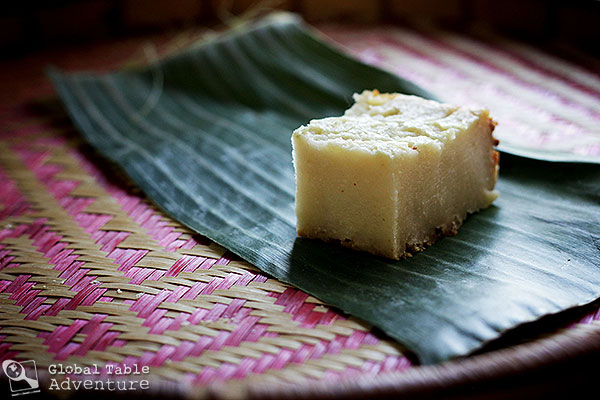
I secretly love it when a word like “pudding” takes on a whole new meaning than “the sweet chocolate goop found in the refrigerator cases of American supermarkets” (although I do enjoy that sort of pudding as much as the next sugar crazed mom). I love surprises like this because they teach me not to take so much for granted. They remind me that there are people all over this beautiful world who have different ways of doing things. And, in case you didn’t get the memo, different is a beautiful thing. Imagine how boring our world would be if we all looked the same, talked the same, and… ate the very same pudding? In Solomon Islands and throughout Oceania, pudding is any goupy mixture that’s been grated and baked. Or sometimes steamed. Confused? Let’s get specific. The most popular pudding in Solomon Islands is Cassava Pudding. This is more of a savory cake than pudding. It’s made with grated cassava, sweet potato, and coconut milk. The whole shebang is traditionally baked all afternoon in …
Read More
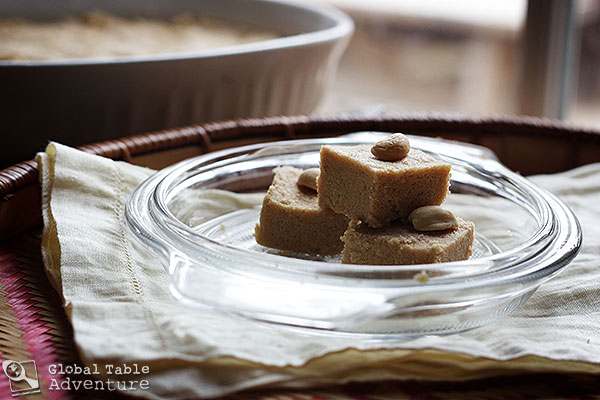
If there’s one thing I’ve learned from this Adventure, it’s that my family’s unfaltering love of peanuts inexorably links us to the fine people of West Africa, where this little legume is enjoyed in both savory and sweet concoctions. Peanut soups and cookies are both fair game, but today we explore Kanya, an altogether new delight. Kanya are naturally gluten free and beyond simple, made with just three ingredients: peanuts, sugar, and toasted rice flour. That’s it! Kanya remind me of fudge, but with a drier, slightly crunchy texture thanks to the toasted rice flour. There’s just one catch (there always is, isn’t there?)… If you want to make Kanya the old fashioned way, you’re going to need arms of steel to push, and punch, and grind the mixture until it is so pulverized that it begins to stick together. Women in Sierra Leone (and beyond) know this art well and can be found patiently pounding grains and peanuts in the dappled sunlight, laughing and talking all the while. When I read about Kanya, I …
Read More

This New Year, I’m making room for sunlight to lay across the floor. No more discarded shoes to trip over. No more stacks of books or useless tchotchkes. Senegal inspired me. I saw photo after photo of her beautiful waters… vast expanses where sunlight runs free, unhampered by clutter. Less stuff in general, with more of the right stuff – friendship, laughter, love. This is how I want my home and my life to be. I want to eat fresh and right. I want sunlight in my body. There’s nothing like starting the New Year with Black-eyed Peas in a crisp, cheerful salad, loaded up with all of her favorite friends: tomatoes, cucumbers, avocado, and hard-boiled eggs. Coincidentally, the mild, tender bean (it’s not really a pea) is a Senegalese staple. You can find salads like this in restaurants along the coastal cities, either dressed simply with fresh lime juice, or coated thickly with a French dressing inspired mixture of ketchup and mayonnaise. Some will serve the beans spicy with minced habenero, while others keep it mild. …
Read More
I used to say I wasn’t a chocolate girl but, as the year’s go by, I’m realizing that it’s really more about finding the right time to eat chocolate. After dinner? Certainly. At 3pm? I’m game. For lunch? Maybe. Midnight? Definitely. 3 am? No way. I’m sleeping for goodness sakes. But breakfast? Am I game for a chocolate breakfast? Let’s just say it’s an arrangement I’m willing to get out of bed for and I know of at least two other people who are as well. After all, who couldn’t use a jolt of dark chocolate goodness to start the day out right? Which brings us to today’s Koko Rice from Samoa. I originally dubbed it “choconut” because I thought I was clever. Unfortunately, Google quickly informed me that I had not, in fact, invented a word so I had to go back to the much simpler, but wordier expression “chocolate and coconut.” Whatever you decide to call it, koko rice is a rich and creamy blend of chocolate and coconut milk with just the lightest hint of orange zest. Each …
Read More
I know three things for sure: this Caribbean soup cannot wipe out old college debt, or go gift shopping for us… or even stop that dog from barking a few houses over (unless that particular dog likes soup?). That being said, I have personal proof that this soup can help you bring love into the kitchen and give your family just a little escape from the ordinary.As you whip it up, the house will fill with the scent of pumpkin, ginger and coconut cream – that’s when it’ll start. Your family will come wandering in to see what you’re doing. The neighbors will come knocking. Soon the house will fill with spirited chatter and spoons clinking against bowls. This taste of the islands is the best thing after a week of pumpkin pie and turkey leftovers (but not to0 big of a leap – it’s still pumpkin season after all!).In Saint Vincent and the Grenadines (as well as all over the Caribbean), they enjoy this soup, often with some really spicy scotch bonnet peppers, ginger, and …
Read More
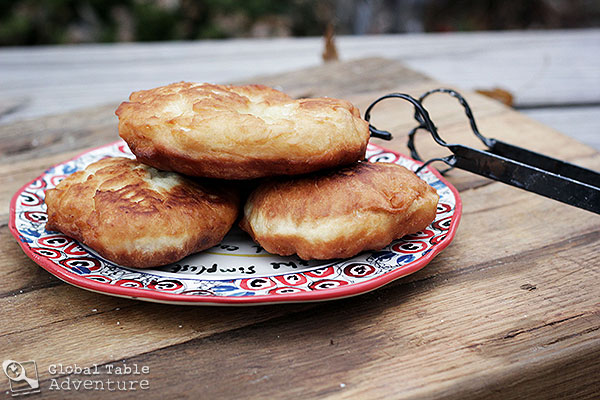
This week I’ve completely given up: – shooing the cat off our bed – working so hard, I can’t see straight. – being in a hurry – doing the laundry – eating boxed cereal Instead, I’m now: – snuggling my cat – not-so-accidentally forgetting my phone at home – dancing with my daughter with the curtains wide open – playing board games with family – gobbling up bakes Thanksgiving week is a time for a little closer look at what matters. It’s about family, not work. It’s about noticing each other and taking the time to interact without twitching, finger first, towards our cellphones. It’s about looking each other in the eyes. And it’s about cooking together. While I value a good pancake (and even a good Russian-style pumpkin pancake) most of the time, I’m a new convert to the Caribbean breakfast treat called “Bakes.” I’ve made three batches in as many days. Despite the name, bakes are only occasionally baked. More often than not, Bakes are fried discs of dough. Confused? Don’t worry. The only thing you …
Read More
There’s a tall, skinny window, in a full-of-love kitchen in Brooklyn, where one can set a giant pot of rice to cool. Under the icy winter sun, steam rolls up and fogs the panes. With a swipe of the hand you can peer out at the city below, but the glass now clings to a dream of sauteed peppers, onion, garlic, celery, and thyme. This special place is my friend Marina’s kitchen, where I cooked our Global Table this past week while I was in NYC. There’s nothing to this recipe. And yet it is everything. And this is why it’s a staple all over the Caribbean. The version I made is vegan, although a few slices of diced, fried bacon or a ham hock would be grand – and traditional – in this as well (just fry them up before you add the veggies). The key to this dish are the Pigeon Peas, although you can substitute black-eyed peas if you can’t find any. In a delightful twist of fate, I found pigeon peas …
Read More
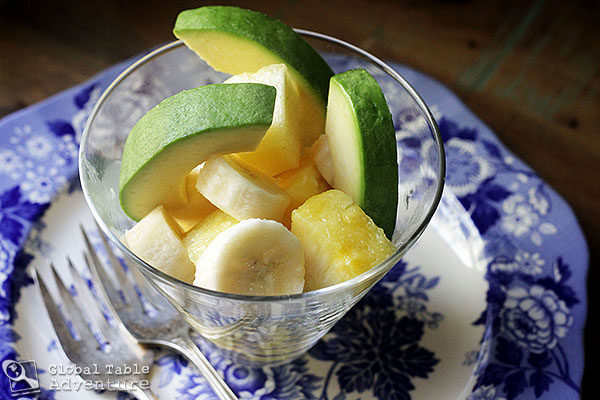
We may be in the heart of autumn here in Tulsa, Oklahoma, but no celebration of Rwanda is complete without a sliver of tropical fruit. This is the most popular way to end in a meal in Rwanda. Varieties include mango, pineapple, papaya, passion fruit, banana, and even buttery avocado: Although Mukamana says she and her husband cannot afford to purchase all the fruits needed to make a salad every day, they buy enough produce to make sure everyone at home eats a banana, an orange, or a piece of pineapple after every meal. (USAID) From what I hear, one piece is enough in Rwanda. The fruit, fresh and thick from growing in the humming, humid tropical air, is lusciously sweet. Each bite hangs heavy in the mouth. Ingredients: banana pineapple avocado mango papaya passion fruit Method: NOTE: There’s no right or wrong way to make a fruit salad, but if the weather is chilly where you live, you might be best off sticking to bananas. Unlike more temperamental mangoes and papayas, bananas seem to …
Read More

Sweet potatoes are up there with a good hair cut, purring cats, and sunlight through fiery autumn leaves. The simple sweetness is all I need on a chilly evening. But it’s not all about the coppery hued variety, which litter my counter tops like fallen leaves. There’s such a thing as white sweet potatoes, too. Rwandans love sweet potatoes, especially white sweet potatoes which they boil, mash, and even fry. I first saw this in action on the a Peace Corps blog En Route Rwanda: With help from some of our house mates and dinner guests, we peeled and sliced several kilos of knobby white sweet potatoes, which Zilpa then spent hours double-frying on the second charcoal stove. According to the Rwanda Agricultural Research Institute: Sweet potato is a major staple food in Rwanda and one of the second largest produces in terms of tons after bananas. The ability of sweet potato to adapt to a wide range of growing conditions, in both fertile and marginal areas, as well as its rapid growth rate as a ground cover to …
Read More


